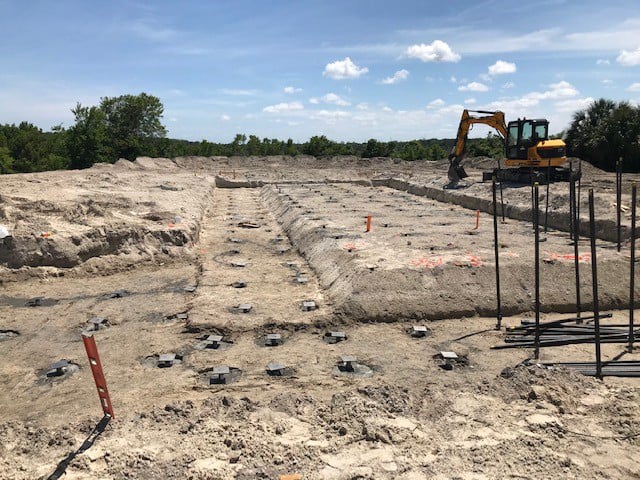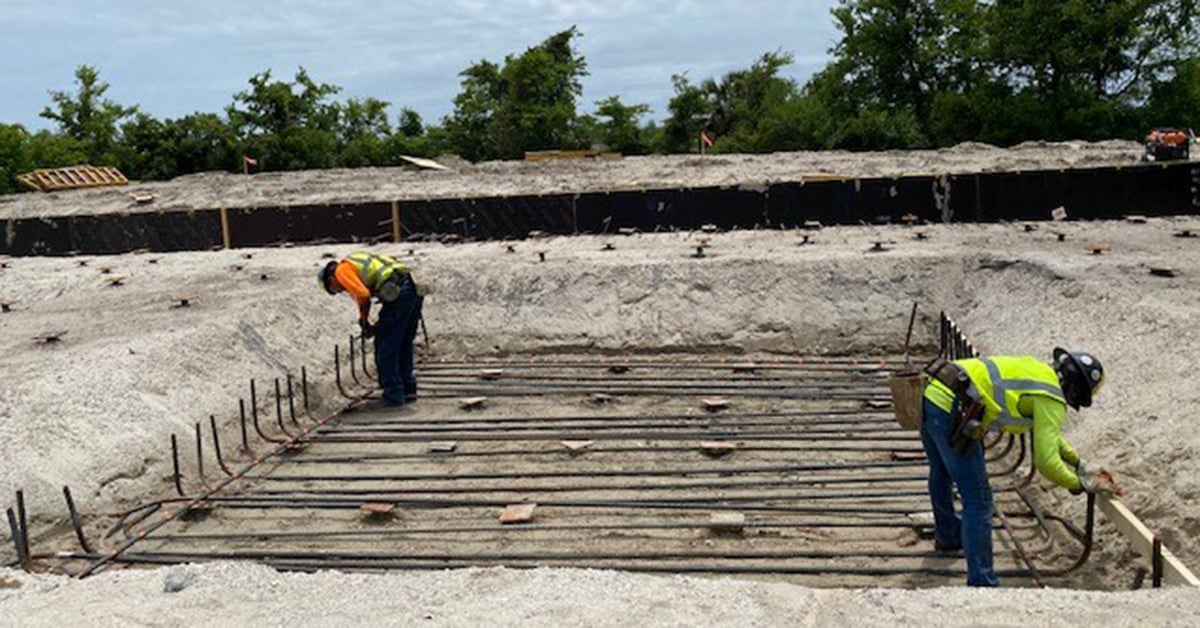Located on the Atlantic coast near Jacksonville, Florida, Naval Station Mayport was commissioned in 1942 and is now has one of the largest naval surface fleet concentrations in the United States.
The Project
Missile magazine upgrades were scheduled for two existing magazines located at the Naval Station. For safety reasons the missile magazines were located on the outskirts of the main base area near wetlands that surround the base. Due to the weight of the magazines and the soft soil, a deep foundation was required for adequate support.
The two existing magazines were supported by driven concrete pilings. It’s just what it sounds like – large pillars of concrete are hammered (or driven) into the ground. In addition to the significant spoils produced in installation, they are very difficult to extract if needed. The piles are difficult to transport and require heavy equipment to install.
Concrete piles would not be an option for this new installation. The installation site was adjacent to a flight path and could not accommodate a big crane that would have been required to install driven piles. The Team had to get creative.
The Team
-
-
-
Certified Installer: Mason Grady Foundations, Pensacola, FL and Cairo, GA
-
CHANCE Distributor: Foundation Technologies, Inc., Lawrenceville, GA
-
Engineer: exp Federal, Inc., Chicago, IL
-
General Contractor: Desbuild Inc., Orange Park, FL
-
Helical Pile Designer: Keever McKee Engineering, Tallahassee, FL
The Solution
A geotechnical study found very loose sand with organics within the footprint of the building to a depth of approximately 25'-35'. With wetlands on both sides of the work area and a narrow access road into the work site, the design team needed a deep foundation system that could be installed with:
-
-
-
small equipment,
-
no spoils, and
-
no mess.
The engineers decided that helical piles would be the best solution to all of these challenges. The design called for (612) CHANCE Model SS150 Square Shaft Helical Pulldown Micropiles with 8"/10"/12" helix and 5" diameter grout column. Square shaft piles have the highest torque-to-capacity factor (Kt) of any helical pile type and the accompanying grout column results in a higher capacity pile system which is ideal for weak soils.
The team designed the foundations with the aid of HeliCAP® helical capacity design software. By inputting the soil data, the team could predict installation depth and foundation system capacity, which would be confirmed during installation by measuring torque.

Piles were installed to an average depth of 35'. Each pile was designed to support an allowable load of 55-kips in compression. Piles were installed with a CAT 308 Mini-Excavator and grout was mixed on site with a Chemgrout Portable Skidmounted Grout Plant.
The installation was completed using the small installation equipment to enter work site on narrow access road, which included a low-capacity bridge over a canal. Helical piles produce no spoils, resulting in easy clean up and containment of grout so as not to disturb the wetlands on either side of the work site.

The final installation torque was 7,000 ft-lbs. measured using a CHANCE Digital Torque Indicator – a tool that allows installers to monitor and share torque readings during the installation.
If you are interested in learning how helical piles with a grout column may be a viable option for your next project, contact your local CHANCE distributor.
Mason Grady Foundations, with locations in Georgia and Florida, is a family owned and operated deep foundation construction company and CHANCE Certified Installer. With construction services for commercial, institutional, and residential clients, MGF provides a foundation to build on through strong working relationships, trust, ethics, pride and a safety-focused culture.

